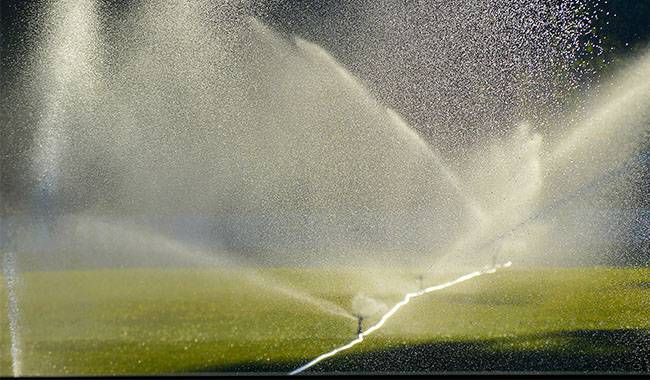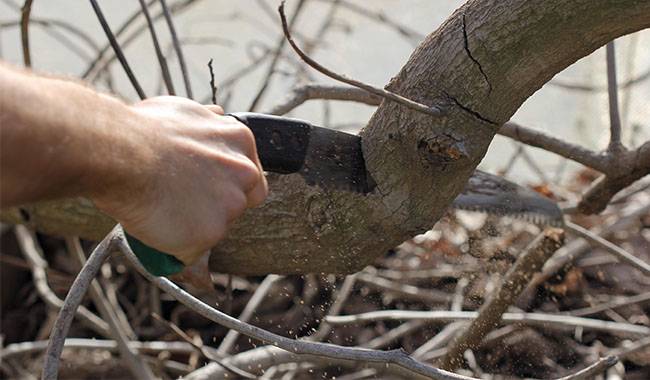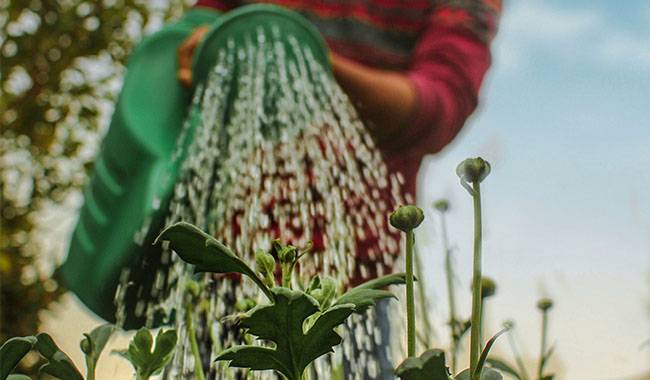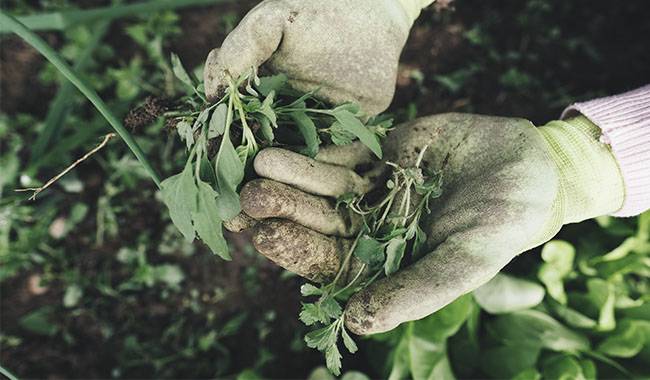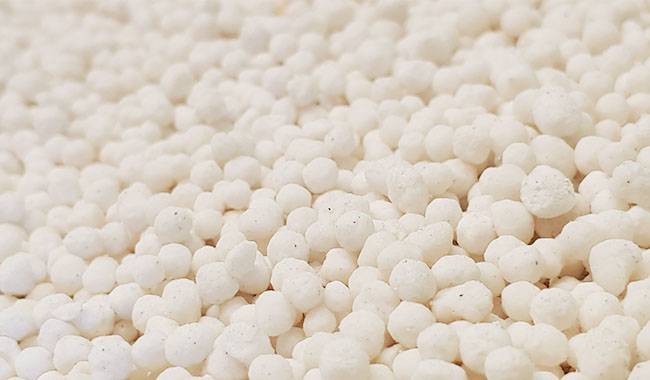
Ammonium nitrate is also known as NH₄NO₃. Essentially, it is nitrate and is one of the most common members of the fertilizer family.
A timely and optimal dose of Ammonium nitrate will ensure that the flowers on your grounds bloom longer and more luxuriantly, and the fruit of your shrubs and fruit trees will become more flavorful.
The use of Ammonium nitrate is even said to extend the shelf life of late-ripening varieties of apples, and roses grown in Ammonium nitrate-enriched soil stand longer in vases.
PROCESS AND COMPOSITION OF AMMONIUM NITRATE
On the scale of use, Ammonium nitrate is a clear leader among all fertilizers used for vegetable growing, fruit growing, and general agriculture.
Perhaps the popularity of this fertilizer is due to the fact that it can be used to “work” even if the ground has not yet completely thawed.
Ammonium nitrate is a one-component compound that, on the soil surface, immediately begins to decompose, releasing large amounts of nitrogen.
It is produced by 2 methods. By the first method, Ammonium nitrate is obtained by neutralizing nitric acid with ammonia gas.
In the second variant, ammonia is synthesized from nitrogen and hydrogen, part of which is oxidized to nitric acid and reacts with ammonia, resulting in the formation of Ammonium nitrate.
If we talk about the appearance of Ammonium nitrate, they are granular, small, solid, and about 3 mm in diameter, but sometimes a little larger. The color of these granules may vary from white milk, to gray or even pink.
Usually, this fertilizer is made by adding various trace elements, in addition to calcium superphosphate or potash.
The typical composition of standard Ammonium nitrate is about 35% nitrogen, although it can be less.
If we consider Ammonium nitrate as a nitrogen fertilizer, then we can distinguish some types or kinds of such fertilizers that have in their composition, in addition to nitrogen, other components that are equally important for plants:
- Simple fertilizers, which are saturated with nitrogen and can be a perfect substitute for urea.
- Type B fertilizers, generally used for household plants and vegetable crops.
- potassium nitrate – this type of fertilizer also contains potassium; it is mainly used during flowering and ovary formation and usually improves the taste of the plant and prolongs the flowering period.
- calcium nitrate, here mainly potassium, increases the yield and extends the shelf life of the product due to its application in the soil
- Magnesium nitrate (magnesium nitrate) – it is a nitrogen-magnesium fertilizer, in fact, it is another source of magnesium needed by legumes
- Lime Ammonium nitrate, which combines all the above-mentioned fertilizer types and contains potassium, magnesium, and of course calcium.
Sodium nitrate, a largely alkaline fertilizer, is most commonly used to fertilize sugar beets and potatoes.
CHARACTERISTICS OF AMMONIUM NITRATE APPLICATION ON DIFFERENT TYPES OF SOILS
The use of Ammonium nitrate should not be based on the simple wishes of the gardener or vegetable grower, but on the type of soil, type of plant, climatic conditions of the region where it is applied, as well as on the characteristics of agrochemicals for specific cultivation techniques.
As for the universality of Ammonium nitrate, we can say with certainty that this fertilizer is suitable for any type of soil, but on land with podzolic soils, slight acidification occurs with the annual application of this fertilizer.
Tip: On clay and compact soils it is better to apply Ammonium nitrate in winter by digging the soil, however, spring application is also possible.
If your area has an excessively wet growing season, it is best to apply Ammonium nitrate as a fertilizer in the spring and fall. In areas with normal humidity, is quite sufficient for spring application.
HOW TO USE AMMONIUM NITRATE?
This fertilizer can be used in vegetable gardens, especially in those areas where the rules of crop rotation are not observed. In such cases, the use of this fertilizer will help to quell the consequences of these violations.
In orchards, this fertilizer helps to stimulate the development of young seedlings, mature trees, various shrubs, and flower crops. In fruit growing, proper application of Ammonium nitrate can significantly increase yields (up to 50%).
In the ground, Ammonium nitrate can be dried under soil excavation in spring and autumn, i.e. in the form of granules.
In addition, this fertilizer can be applied in dissolved form, both for root feeding and for foliar feeding, i.e. the fertilizer dissolved in water is sprayed directly on the leaves.
USE OF AMMONIUM NITRATE IN VARIOUS CROPS
Potato
Normally, Ammonium nitrate is introduced into the hole with the tip of a teaspoon, mixed thoroughly with the soil, then the tubers are spread and covered with soil.
White cabbage
Use this fertilizer one week after placing the seedlings in a fixed place. It does not make sense to apply the fertilizer dry, you should dilute 15 g of fertilizer in a bucket of water and use it per square meter.
After a week of feeding, you can do foliar feeding – spray 0.25% Ammonium nitrate on the foliage of the sprouts in the evening and repeat this treatment 5-7 times during the growing season.
Onions
First, spread Ammonium nitrate on the unthawed soil at about 9-11 grams per square meter. After a week, you can sprinkle the same amount of Ammonium nitrate on the first shoots and loosen the soil gently.
Grapes
The first part of the fertilizer should be applied in spring at the rate of half a tablespoon under each bush and in summer at the rate of one-third of a tablespoon under each bush. The soil should be loosened and watered.
Garden strawberries
No fertilizer is needed for the first season, the second year you can do 5-9 grams of Ammonium nitrate per square meter, buried in a pre-dug inter-row trench at a depth of 3-3.5inch (8-9 cm). After application, the bed should be covered with soil.
In the 3rd season it is better to water the plants with dissolved fertilizer – 25 grams of fertilizer in a bucket of water with a consumption of 1 liter per square meter, watering not on the leaves, but as much as possible under the roots, better in the evening.
GROWING MOST VEGETABLE CROPS
You need to add literally 3-5 grams of Ammonium nitrate to each hole, and if you decide beforehand to dilute this amount in 0.5 liters of water, that’s perfect. One
After a week, you can repeat the fertilization on already stronger plants by diluting 35 grams of fertilizer in a bucket of water, spent per square meter of soil occupied by the sprouts.
Horticultural crops
When planting, 16-18 grams of Ammonium nitrate should be poured into the hole and mixed thoroughly with the soil. Later, until mid-June, you can make another application by dissolving 25 grams of fertilizer in a bucket of water and pouring this amount under each tree of five years or more, 20 grams – less than five years.
If the fruit trees are deficient in nitrogen, you can spray them with Ammonium nitrate solution at 25 grams per bucket of water, the most important thing is to thoroughly wet all the above-ground parts of the plant.
Flowering crops
Flowering plants such as anemones and petunias also respond well to Ammonium nitrate. To do this, you must first prepare a standard soil mixture in which to grow your plants and then add a tablespoon of this fertilizer to it.
If you want to go further and water your flowers with Ammonium nitrate, then 10 peas per bucket of water will be enough for this amount – calculated on the basis of square meters of the area occupied by the flowers.
In spring you can fertilize roses, to do this you need to water them with a solution consisting of one tablespoon of fertilizer per bucket of water, this rate is enough for 3-4 rose bushes.
NEGATIVE PROPERTIES OF AMMONIUM NITRATE
- Ammonium nitrate is highly explosive, therefore, it should be stored away from fire sources.
- Do not spray plants on green leaves during the day, this will cause severe burns on the leaves.
- If you decide to mix Ammonium nitrate with potash and phosphate fertilizer, apply fertilizer with this mixture as soon as you prepare the soil.
- Do not use this fertilizer on vegetable crops that can accumulate nitrates: zucchini, cucumbers, squash.
- If an overdose still occurs, water the garden heavily for a week, combining watering with loosening the soil.
- The use of this fertilizer on any crop should be completely stopped two weeks before harvesting the fruit.
HOW TO STORE AMMONIUM NITRATE?
Firstly, Ammonium nitrate should be protected from fire and secondly, from moisture. If the fertilizer will be stored indoors, it should be free from sources of ignition, tightly closed, and without the possibility of moisture penetration.
The ideal storage temperature is 77°F (25-30°C) above zero, and high-temperature fluctuations are also undesirable, as they can cause agglomeration of granules and make further use difficult.
The normal shelf life of Ammonium nitrate is 6 months, but it comes in a closed bag, and when the package is opened, the shelf life is reduced to only one month.
CONCLUSION
As you can see, Ammonium nitrate can be considered an almost indispensable fertilizer, it is used in 80% of cases, and if you do everything right, you will get delicious and large fruits, free of nitrates, as well as lush flowers and large rose buds and other flowers in your plot.




